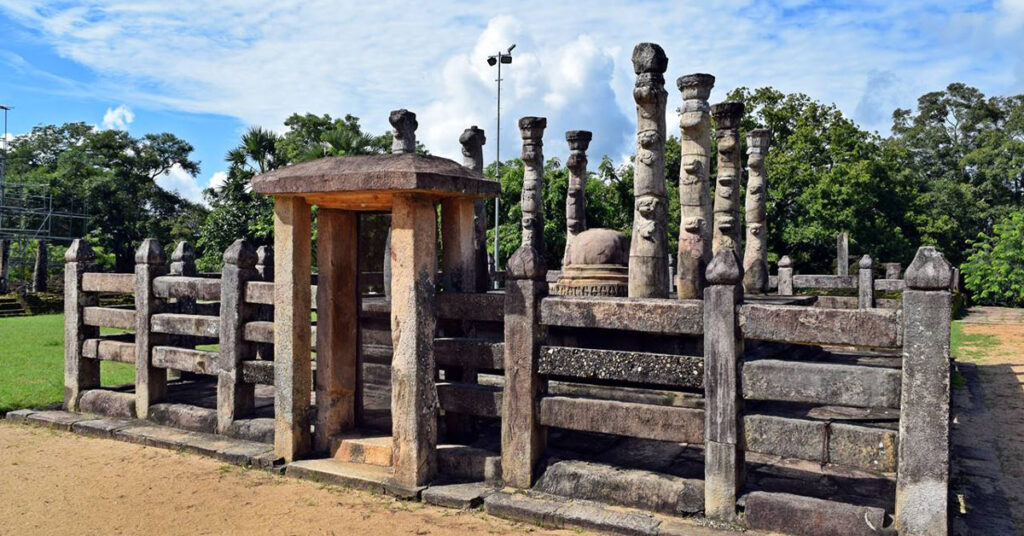Sri Lanka, an island nation in the Indian Ocean, is well known for its extensive and historically significant cultural legacy. A melting pot of various cultures, religions, and races, the nation has influenced the island’s history, architecture, fine arts, and food. The cultural heritage of Sri Lanka is a reflection of the island’s complicated past and lively present, from the prehistoric kingdoms of Anuradhapura and Polonnaruwa to the colonial-era structures in Colombo. This article will look at some of Sri Lanka’s most amazing cultural legacy, including its famous temples, historic monuments, and traditional arts and crafts.
2. The ancient city of Polonnaruwa
This is the second part of our Sri Lankan rich cultural heritages series.
The city of Polonnaruwa, which is most frequently referred to as Sri Lanka’s second ancient capital, is nonetheless a superbly preserved city with a wealth of archaeological monuments and natural beauty. The ancient city of Polonnaruwa, which is situated in Sri Lanka’s North Central Province, is connected to an adjacent “old town” and a “new town” that is about 6 kilometers distant. The layout of the archaeological sites is small, making it simple to travel between them. Tours can be planned on foot or, more commonly, by bicycle. The Buddhist sites in Polonnaruwa are comparable to those in Anuradhapura, and pilgrimage tour buses can frequently be seen touring the stupas and monasteries. However, Polonnaruwa also has an outstanding collection of abandoned palaces, courtyards, pleasure gardens, and sophisticated networks of bathing tanks, as well as numerous carvings, sculptures, and other works of art. In 1982, UNESCO recognized the historic city a World Heritage Site.
Today, Polonnaruwa is a display of the magnificent historic Sri Lankan architecture from the 12th century AD, which was woven together with several Buddhist monasteries and monuments constructed by King Parakramabahu I. Later Kalinga dynasty King Nissankamalla (1187–1196 AD) also made contributions to the construction of numerous structures and monuments at Polonnaruwa.
There were agricultural advancements with irrigation work and buildings like the Elahera canal, Minneriya tank, Kaudulla tank, Giritale tank, etc. at the Polonnaruwa area during the Anuradhapura period, which spanned the first to sixth centuries AD. Units of the governing King’s army from the Anuradhapura kingdom were also present at Polonnaruwa. At the time, it had not yet become a significant metropolis. The Anuradhapura Kingdom’s first king, King Aggabodhi IV, ruled from Polonnaruwa between the years of 667 and 685 AD. This city’s previous name, Pulatthinagara, was inspired by the great sage Pulasti and serves as a reminder of the Hindu culture that once prevailed there.
The Polonnaruwa era, which ran from 1153 to 86 AD, was ruled by the greatest king, King Parakramabahu I, and it was a flourishing period for the entire island kingdom. It was a time of abundant architectural activity, some of which may still be seen today. He built the city using engineers and architects that were brought over from India, and many well-preserved sites still standing today show the influence of Indian design. The Gal Viharaya, Thuparamaya Image House, Lankathilaka Image House, and many other locations dotted around the old city of Polonnaruwa are excellent examples of Polonnaruwa architecture, art, and sculpture.
The Polonnaruwa kingdom was ruled by the Cholas for around 73 years as a result of invasions from the Cholas of South India. In the later half of the 12th century, Sinhala kings abandoned the Polonnaruwa kingdom.
Famous locations including Sigiriya, Medirigiriya, Somawathie, Dimbulagala, and Buduruwayaya are close to Polonnaruwa and are hence easily accessible.

Parakrama Samudra
The renowned King Parakramabahu constructed the Parakrama Samudraya, which is regarded as one of the most important works of art in Sri Lankan history. Three rivers, Topa, Dumutulu, and Eramudu Wewa, were combined to create the Parakrama Samudraya reservoir. By building a dam across the Amban Ganga at Angamedilla, the Akasa Ganga was created to redirect water to the Parakrama Samudraya. The original granite anicut’s remnants are still visible today. Ancient irrigation facilities that are still in operation today include the Angamedilla Anicut and the Bhuwewa Sluice Gate, both of which have historical significance.
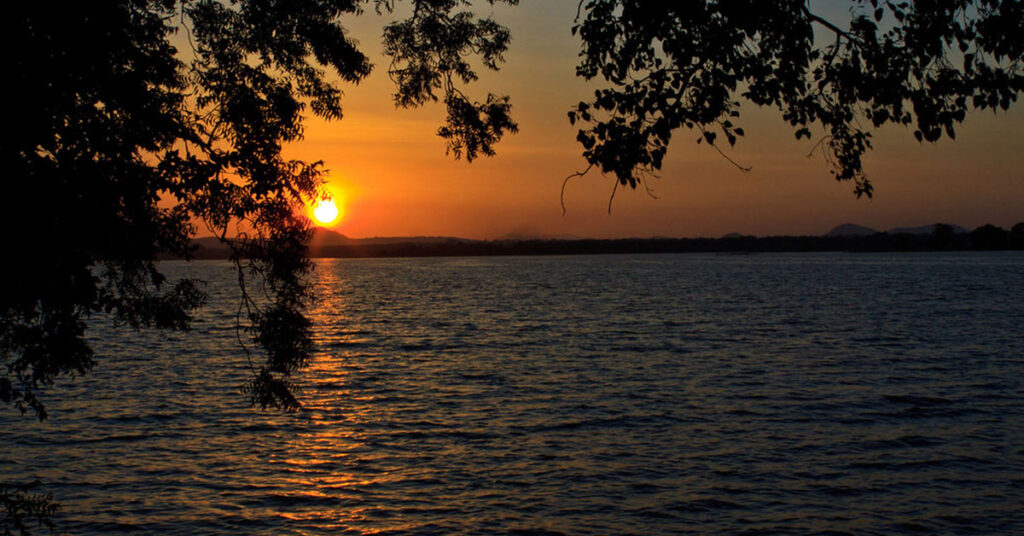
Royal Palace and Council Chambers
King Parakramabahu (1153–1186) once lived in the opulent Polonnaruwa Royal Palace. The Polonnaruwa Royal Palace at its height would have been a collection of structures, some rising as high as seven stories. Currently, all that is left are some attractive ruins with still-standing walls. The ruins of the king’s audience hall and his swimming ponds can be found immediately south of the main palace.
Today, tourists may marvel at the Royal Palace’s ruins and imagine what it must have looked like when it was at its most opulent. To prevent heavy crowds, it is advised that guests arrive at the palace early. It’s also suggested that you avoid taking photos of Buddha with your back to him in order to avoid offending him. Before visiting any of the sites, it is a good idea to visit the Polonnaruwa Archaeological Museum because it exhibits artifacts and gives a thorough history of the entire old city, including a scale model of the Polonnaruwa Council Chamber.
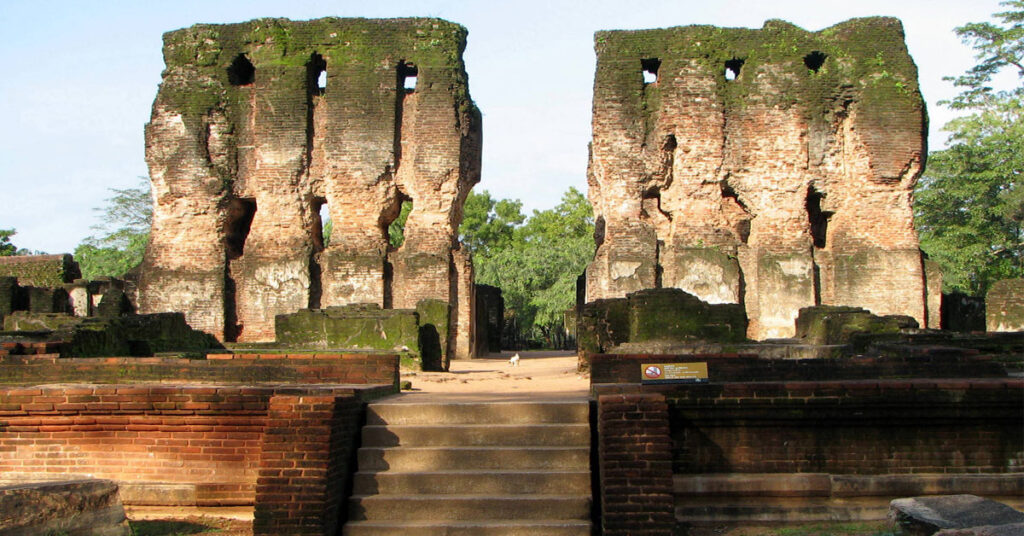
The Thuparama in Polonnaruwa
The southwest corner of the adjacent quadrangle is occupied by this oblong brick image house. A substantial Buddhist image house is called Thuparama. A destroyed brick and plaster pile that originally housed a seated Buddha image is located inside the structure in the inner sanctuary. The structure’s original vaulted roof is still in place. Tropical downpours flow down the roof’s curve, and Makara (dragon) spouts channel the water to the ground like the gargoyles of medieval Europe.

The Vatadage
Even in ancient Sri Lanka, this circular relic house exhibits a special elegance and beauty. A screen wall with four-petaled flower patterns runs parallel to the outer circle of stone pillars. The stone access stairwells at the cardinal points are exquisitely crafted. A stone statue of the Buddha is located at the top of each flight. Moonstones, guard stones, and sculptured calligraphy are abundant at the shrine. The shrine is oriented toward the cardinal points of north, south, east, and west, like all dagobas in Sri Lanka. With their backs to the dagaba mound, four statues of the Buddha stand facing outward.
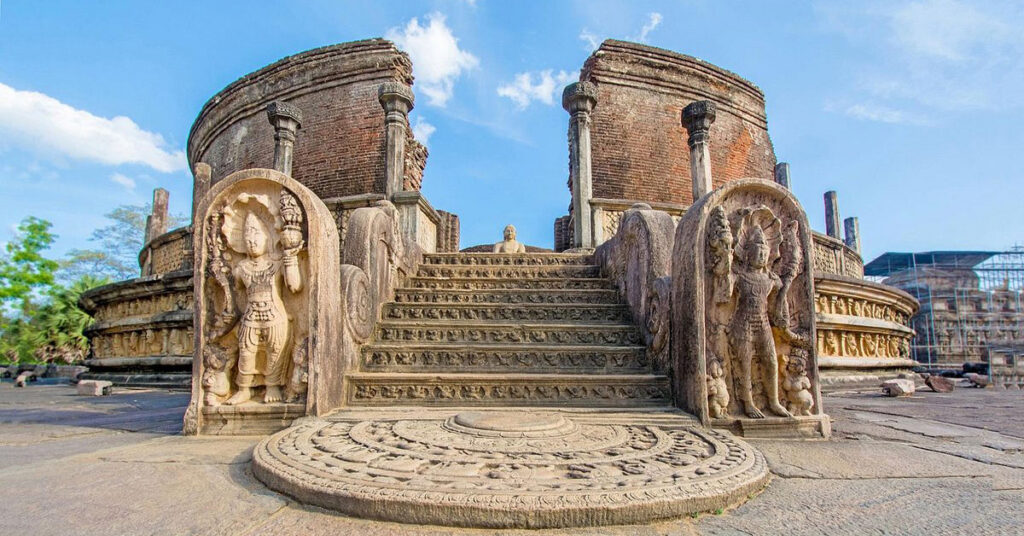
The Hatadage
The Sri Lankan city of Polonnaruwa is home to the ancient relic shrine known as Hatadage. Nissanka Malla constructed it, and the Buddha’s tooth relic was once preserved there. Stone, brick, and wood were used in the construction of the Hatadage, albeit only fragments of the stone and brick walls still stand today. It seems to have been a two-story building, but the top floor has since been lost. Within a room of the shrine are three Buddha statues made of granite rock.
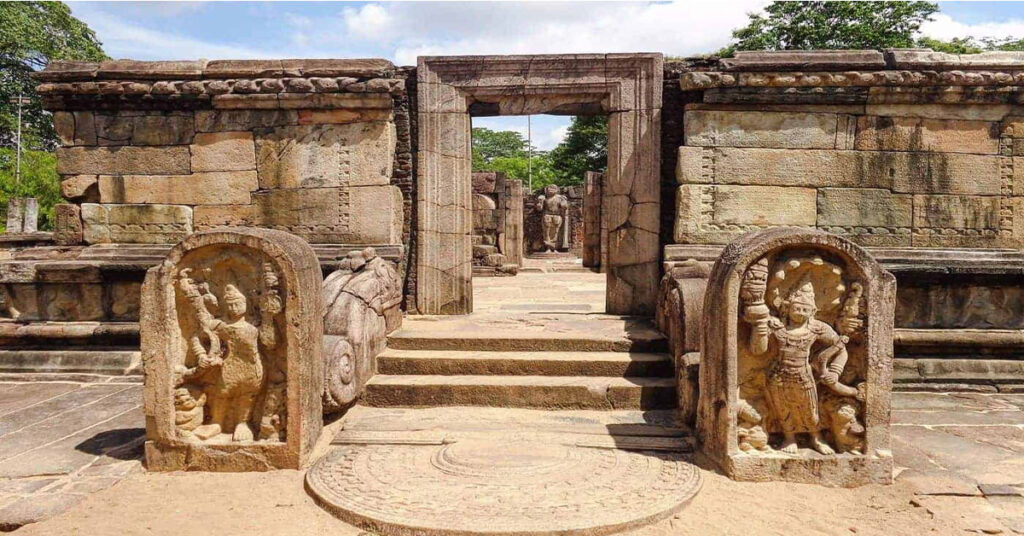
Shiva Devale – NO 1
The Shiva Devale is located in the Sri Lankan city of Polonnaruwa. It is Polonnaruwa’s second-oldest building. Its brief Chola period, during which Indian conquerors settled there and held sway over the city for a considerable amount of time, forms the foundation of its history.
The Shiva Deval No. 1 is located in the Quadrangle’s southernmost corner. Brick roof with a domed shape that has collapsed. According to reports, numerous high-quality bronzes were discovered during the excavation and are now on display in the archaeological museum. The Shiva Devale No. 2 is still standing today in its original shape and is made entirely of stone.
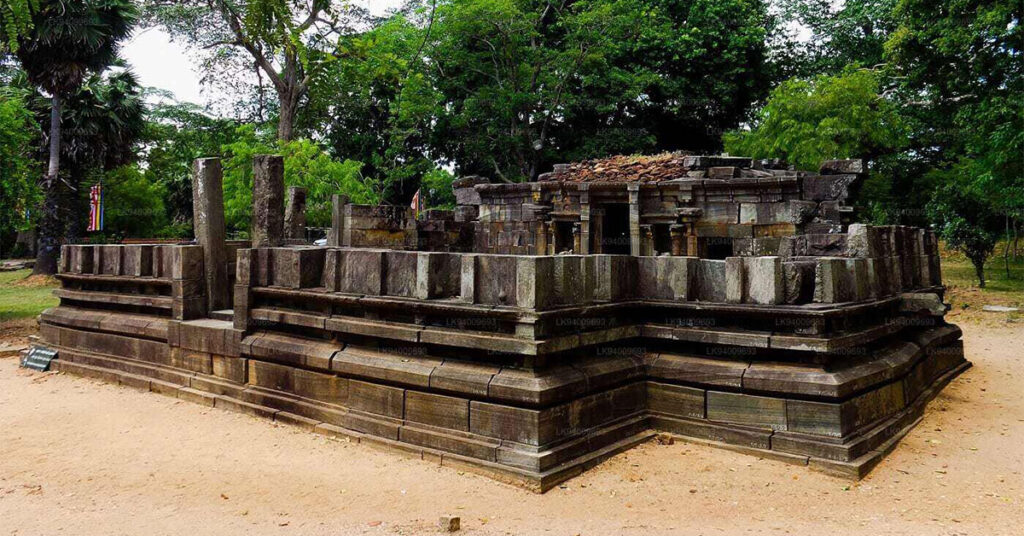
Nissanka Latha Mandapaya
This pillared building has been identified as the Nissanka Latha Mandapaya based on the inscriptions that have been discovered. It may be found in the area known as Dalada Maluwa in the Polonnaruwa District of Sri Lanka’s North Central Province. The King Nissankamalla (1187-1196 A.D.) built this structure. This is the location where King Nissankamalla listened to Pirith Chanting, which is a recitation or chanting of the words of the Lord Buddha, according to an inscription. The building has a stone fence surrounding it, and a stone doorway guards the entry. This building has unusually shaped stone pillars. These pillars have three carvings and are not perfectly straight. The pillars’ tops have the appearance of lotus buds.
